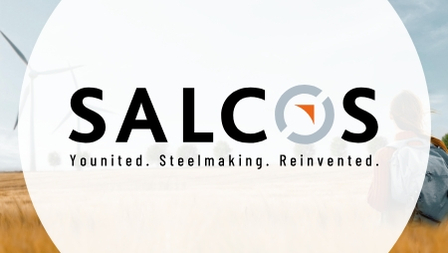SALCOS® - Salzgitter Initiative to reduce CO2 in the steelmaking of the future
14.03.2018 | Salzgitter Flachstahl GmbH
Working with external partners, the Salzgitter Group is investigating new technologies to produce steel with lower CO2 emissions, initially for the group's own iron and steel works in Salzgitter but with the prospect of fundamental applicability at every location involved in the same type of so-called "integrated" steel manufacturing. The activities for direct avoidance of CO2 emissions (Carbon Direct Avoidance, CDA) in steel production are combined under the project title SAlzgitter Low CO2-Steelmaking (SALCOS®).
Iron ore is currently virtually exclusively reduced in blast furnaces with the use of carbon essentially in the form of coke, coal and hydrocarbons (oil, natural gas). This necessarily results in CO2 emissions. In special systems, so-called direct reduction plants (DPR), however, hydrogen can largely replace carbon as the reducing agent during iron ore reduction. Today the necessary hydrogen comes from natural gas (CH4), and consequently until now such systems have only been used in countries with economical natural gas reserves (e.g., Near East, Russia, USA. In principle, hydrogen use is therefore one possible way to achieve carbon direct avoidance in the steel industry.
SALCOS® offers a significant, incremental reduction in Salzgitter AG's CO2 emissions while allowing the greatest possible use of existing production plants. The direct avoidance of CO2 formation during steel production is advantageous in terms of energy and presumably also costs compared to CO2 precipitation from the cupola furnace gases during steel production for use in chemical synthesis processes, as targeted in Carbon Capture and Usage (CCU) systems. The economic implementation of SALCOS® requires permanently suitable frame conditions.
As described above, natural gas is first used to reduce iron ore in the direct reduction units. The resulting product is called DRI (Direct Reduced Iron), a highly metallized, solid iron carrier. DRI can be melted down either in the blast furnace or in electric arc furnaces (EAF).
The objective of SALCOS® is to replace substantial portions of the fossil natural gas used with hydrogen, which is to be acquired through electrolysis using volatile electricity from renewable energies. Depending on the phase, reductions in Salzgitter AG’s CO2 emissions of from 10% to more than 85% are possible. As a further option, SALCOS® also allows the residual amounts of CO2 that still arise to be supplied for use in synthesis processes.
You will find further details and current information on the SZAG website https://salcos.salzgitter-ag.com or with the SALCOS® explanatory film (only available in German language)








